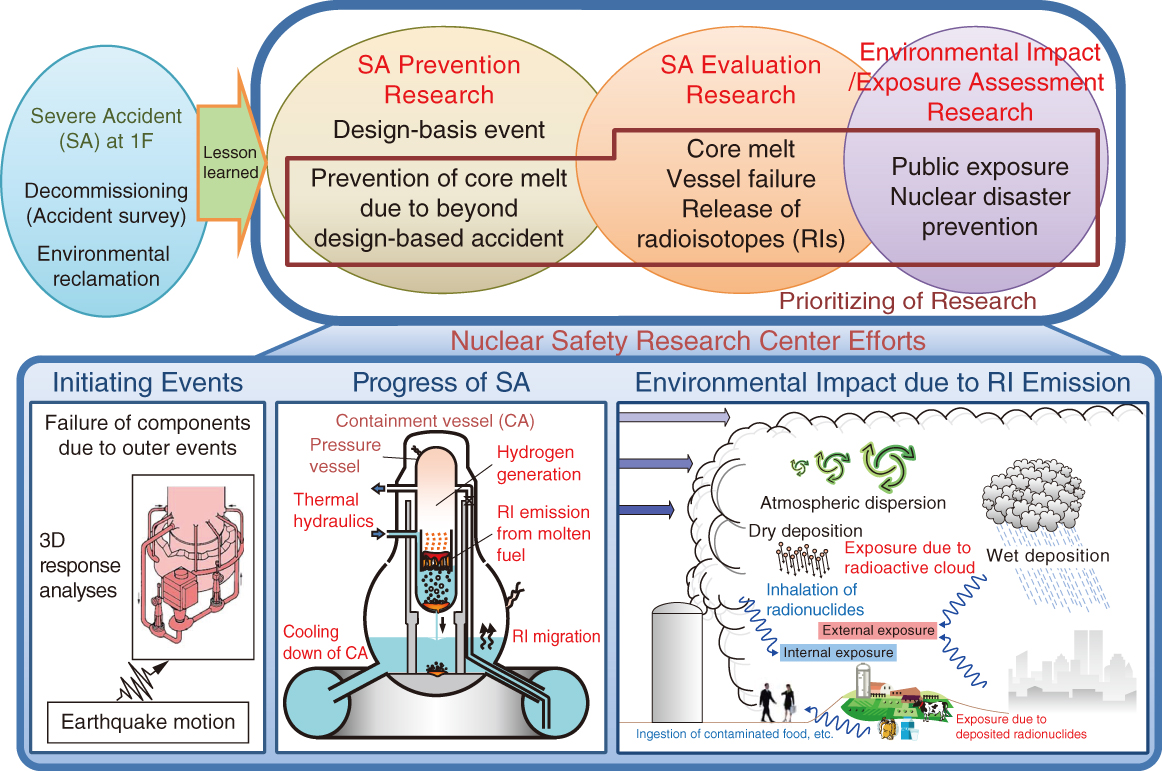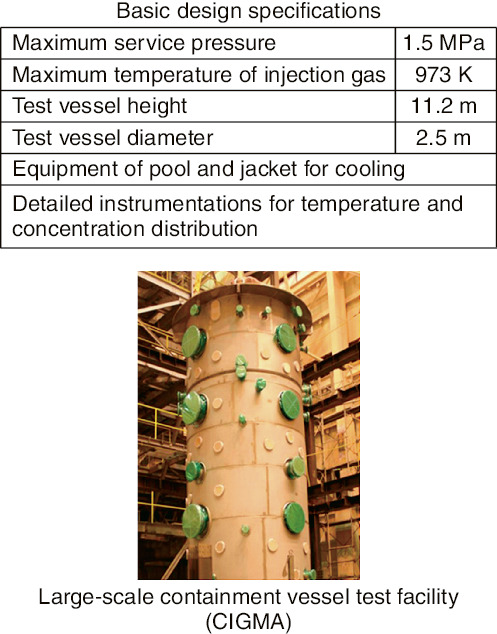
Fig.2-1 Directions of research at the Nuclear Safety Research Center

Fig.2-2 Outline of the large-scale containment vessel test facility (CIGMA)
The Nuclear Safety Research Center (NSRC) performs advanced safety research to provide a technical basis for nuclear regulation authorities in terms of nuclear-safety assessment as well as offer a long-term viewpoint through calculations, experiments, and measurement techniques. Through such research, we contribute to the development of safety criteria and support the creation of safety regulations with continuous improvement aimed at the highest level of safety.
We reviewed our previous research on design-based events prior to the accident at the TEPCO’s Fukushima Daiichi NPS (1F) in accordance with the lessons learned from the disaster, as shown in Fig.2-1. To reduce the risks of operating nuclear facilities, we have expanded research on prevention and mitigation during the progression of severe accidents (SAs), on preparation for and response to emergency situations, on the consequences of radiation and the management of radioactive waste, and on nuclear criticality safety assessment of fuel debris related to the 1F accident.
With regards to SA research, we intend to clarify thermal–hydraulic phenomena during SAs and develop effective measures to mitigate them. Therefore, we have conducted experiments with a large-scale containment-vessel test facility called CIGMA (Containment Integral Measurement Apparatus), as shown in Fig.2-2. The experiments have focused upon the gas-phase behaviors at high temperatures and the thermal-hydraulic behaviors of mixed gas, including hydrogen, which may cause containment-vessel damage. With a view of upgrading SA-evaluation methods, we intend to improve the accuracy of analyses with the computer codes for SA, employing knowledge obtained from benchmark exercise on the 1F accident conducted by the OECD/NEA international cooperative project.
Moreover, we have developed aircraft-monitoring techniques using a manned helicopter to investigate the distribution of radionuclides in the atmosphere around 1F following the accident. We have performed background monitoring around the Sendai Nuclear Power Plant in response to emergency situations according to the basic disaster-management plan.
This chapter presents the results of recent research on topics including the influence of mesh shape upon temperature in computational-fluid-dynamics-code analysis of nuclear-power-plant accidents considering buoyancy flows (Topic 2-1), the ability of the SA code to predict phenomena observed in previous experiments on the coolability of molten cores in containment vessels during SAs (Topic 2-2), locally deformed structures and the strain distribution of stainless steel under high-irradiation conditions (Topic 2-3), the deterioration rate of the main components of clay buffer materials under alkaline environments during geological disposal of high-level radioactive waste (Topic 2-4), the effects of the growth of spray faults upon groundwater flow around geological-disposal systems (Topic 2-5), and a method for analyzing plutonium-isotope ratios in individual U/Pu mixed particles using alpha and mass spectrometry (Topic 2-6).
The following topic, solicited by the NSRC and related to the accident at 1F, was described in Chapter 1: evaluation of the exposure dose to the residents of Fukushima Prefecture based on measured values and consideration of behavioral patterns (Topic 1-13).